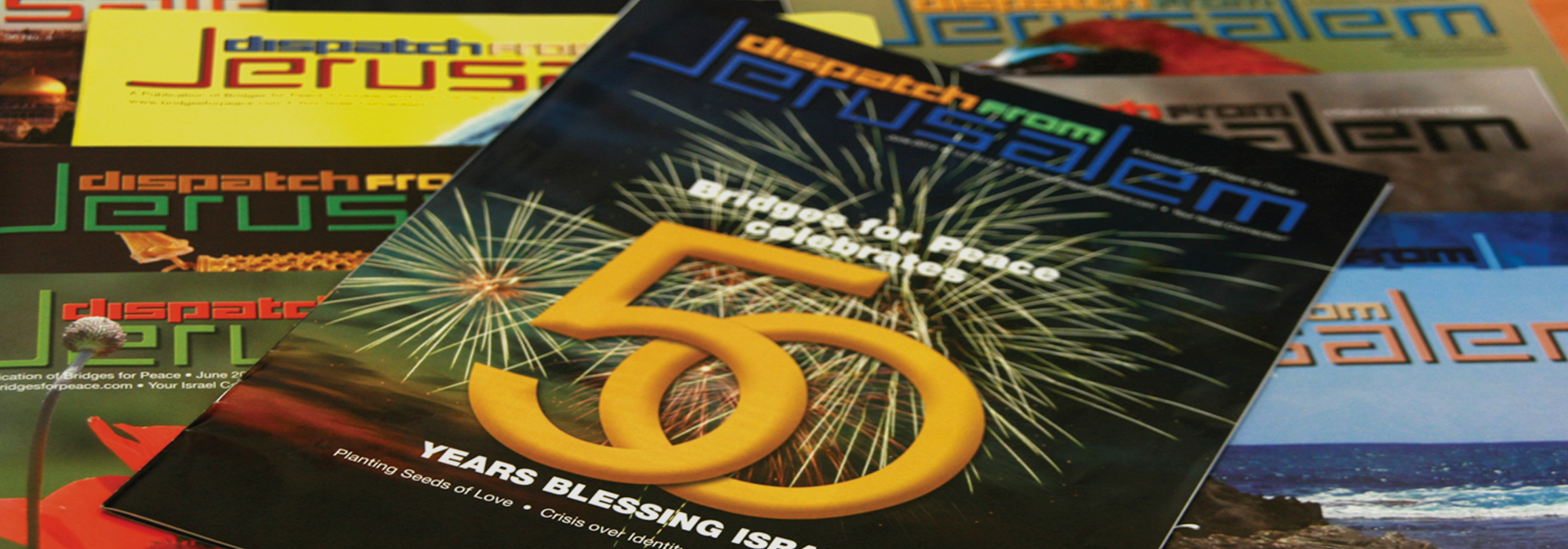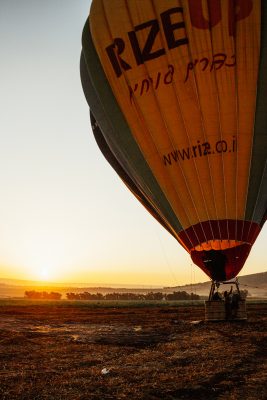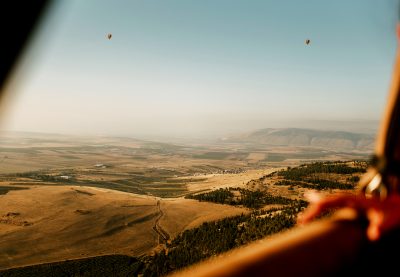
by: Sarah Yoder, BFP Staff Writer
 The early morning stillness broke with the sound of a propane burner flame penetrating the air. A small crew worked skillfully at their task, tugging at the mounds of colorful fabric piled in the field. Gleeful anticipation mounted in our group as we watched the fabric take the shape of a balloon that grew larger with each blast of hot air from the propane burner. The balloon began to billow in the wind, growing so large that it blotted out the low-hanging sun on the horizon.
The early morning stillness broke with the sound of a propane burner flame penetrating the air. A small crew worked skillfully at their task, tugging at the mounds of colorful fabric piled in the field. Gleeful anticipation mounted in our group as we watched the fabric take the shape of a balloon that grew larger with each blast of hot air from the propane burner. The balloon began to billow in the wind, growing so large that it blotted out the low-hanging sun on the horizon.
It was an early Sunday morning in May when our group of 13 climbed aboard the enormous hot air balloon. This experience was one of our final excursions on the Zealous Israel Project, an 11-month discipleship program connecting young adults to God’s heart for Israel.
I will never forget the childlike wonder I felt as I climbed over the side of the wicker basket that anchored the hot air balloon. As I took hold of the rope handles fastened inside the basket, I was jolted by the sound of the burner flame, this time feeling the heat sweep across my face. A soft jolt rattled the basket, and I peeked over the edge to discover that we were already a few inches off the ground. We began to glide along the field at a steady pace, rising higher and higher to meet the endless blue sky above us. At a height of 4,200 feet (1,280 m) above the ground, we were afforded an aerial view of one of the most significant valleys in Israel: the Jezreel Valley.
Nestled in the north between the Mediterranean Sea and the Sea of Galilee, the Jezreel Valley encompasses more than 145 square miles (375.5 square km) of fertile soil. The valley is surrounded almost entirely by mountain ranges: Mount Tabor to the north, Mount Gilboa to the east, the mountains of Samaria to the south and Mount Carmel to the west. As we drifted through the sky like a boat on a lazy river, we could see each of these mountain ranges peeking through the early morning mist that hung low in the valley. Soon the fog began to lift and we could see beyond the mountain ranges to the borders of Lebanon to the north and Jordan to the east.
The Jezreel Valley was part of a major trade route in ancient Israel, primarily because of its easy terrain and close proximity to the coast. This route—referred to in Isaiah 9:1 as “the way to the sea”—was the main thoroughfare going from Egypt all the way to Mesopotamia. As far back as Abraham’s time, this route served as a bridge between Africa and Asia and would have been used by local travelers, merchant caravans and invading armies alike.
One of the most famous sites in the Jezreel valley is Tel Megiddo, or Megiddo Hill. Because of its strategic height and location at the lower end of the valley, whoever controlled Megiddo effectively controlled the traffic on the trade route. Over the centuries, many fortified cities were built on this hilltop, which is thought to have seen more battles than any other location in the world.
 While the Jezreel Valley is more commonly known for its historical significance, the intrinsic value of this stretch of land is understood through its name. It is named for the ancient Israelite city of Jezreel, which means “God will sow”—clearly speaking to the fertile nature of this valley. The name also characterizes God as the Master Gardener, implying that the soil will only bear fruit at His command.
While the Jezreel Valley is more commonly known for its historical significance, the intrinsic value of this stretch of land is understood through its name. It is named for the ancient Israelite city of Jezreel, which means “God will sow”—clearly speaking to the fertile nature of this valley. The name also characterizes God as the Master Gardener, implying that the soil will only bear fruit at His command.
When the Jewish people were exiled from the land after the destruction of the Second Temple, agriculture in the Jezreel Valley was abandoned. Over time, the once vibrant farmland became inundated with swamps, uninhabited until the first Jewish communities were established in the lower Galilee region in the early 1900s. These small communities worked diligently to drain the swamps, and the land responded to God’s chosen people.
Today, the Jezreel Valley is considered the breadbasket of Israel as it produces the majority of Israel’s grain. The valley is filled with orchards and fields that yield a variety of crops such as corn, melons, carrots, peas, cotton and sunflowers. This variety of texture and color makes for an enchanting patchwork of fields that characterizes the idyllic agricultural wonder. God has sown an abundance of seed in this beautiful valley, causing it to “blossom and bud,” as prophesied in Isaiah 27:6.
A sweet stillness settled over my soul as the hot air balloon drifted back down to the fields below. How good and pleasant it is to be reminded of the simplicity of the cycle of life—a seed is sown, the earth responds and life is sustained. After climbing out of the balloon basket, we harvested a few carrots from the adjoining field. As we drove away from the field, enjoying the fruit of the land, I knew that the Jezreel Valley will forever remind me of this simple truth: God will sow.
Photo Credit: Click on photo to see photo credit
All logos and trademarks in this site are property of their respective owner. All other materials are property of Bridges for Peace. Copyright © 2024.
Website Site Design by J-Town Internet Services Ltd. - Based in Jerusalem and Serving the World.